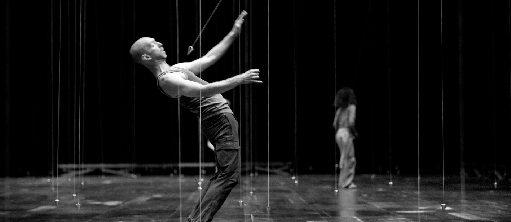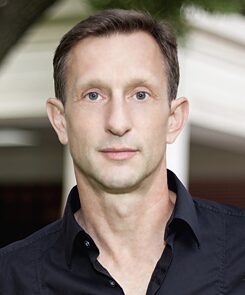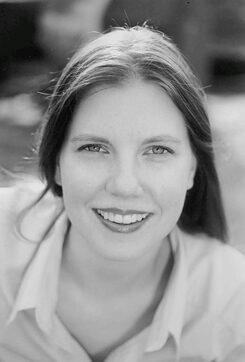Program on interdisciplinary choreographic methodologies and approaches of William Forsythe
A collaboration of the Goethe-Institut, FOUNDATION FORSYTHE and the Sharjah Performing Arts Academy
Presented by Michael Schumacher and Jill Johnson - dancers, choreographers and long-time collaborators and protégés of Forsythe’s
PROGRAM
3-day Choreographic Lab with local dancers in partnership with Sharjah Performing Arts Academy (SPAA) led by Michael Schumacher18 – 20 November 2022 @ Sharjah Performing Arts Academy (SPAA)
2 open public talks led by Michael Schumacher
21 November 2022, 5:15pm - 6:45pm @ Sharjah Performing Arts Academy (SPAA)
22 November 2022, 6:30pm - 8pm @ Berklee Abu Dhabi
ABOUT
“Choreography is a curious and deceptive concept. The word itself, like the processes it describes, is elusive, agile, and maddeningly unmanageable. To reduce choreography to a single denotation is to not understand the most crucial of its mechanisms: to resist and reform previous definitions.”
So begins choreographer William Forsythe’s essay, Choreographic Objects. A peerless artist beyond definition himself, Forsythe’s interdisciplinary invention in the field of dance have made him one of the most prolific and influential artists of the last two centuries. Forsythe’s ethos: “If dance only does what we assume it can do, it will expire.”
Over the last four decades, the methodologies and philosophies that William Forsythe has collaboratively developed with dancers around the globe have not only rendered a cohort of artists who work and research across disciplines, mediums, and platforms – as a group – they have radically expanded the range of possibilities within dance and how Forsythe’s choreographic thinking and approaches to dancing has forever changed how dance can be created, experienced, and presented. Furthermore, Forsythe’s approaches can be and are employed in fields beyond dance in equally innovative ways.
What are these embodied methodologies and philosophies? How were they developed? How can they be applied and practiced? Michael Schumacher and Jill Johnson, dancers, choreographers, producers, stagers, educators, and long-time collaborators and protégés of Forsythe’s -- will share wide-ranging expertise and insights into their three-decade long collaboration with William Forsythe.
William Forsythe is infinitely curious about how choreographic ideas might be in dialogue with fields such as advanced mathematics, philosophy, and technology. Research and application of ideas in said fields are often a part of his choreographic processes as well as his visual art project. Examples of his interdisciplinary collaborations include those with architect Daniel Libeskind on The Books of Groningen and Limb’s Theorem, with esteemed Professor of Law Kendall Thomas on Human Writes, and on the intersection of dance, physics, and digital composition with Professor Joel Ryan. Forsythe’s Choreographic Objects have been exhibited in museums around the world for over two decades, including in Avignon, Frankfurt, Paris, London, Paris, and Sao Paolo, to name but a few.
The program WHAT MIGHT CHOREOGRAPHIC THINKING LOOK LIKE? offers the arts, design, education communities, and greater public of the Gulf region an unprecedented series of unique opportunities to learn about one of the world’s greatest living choreographers through primary practitioner sources.
In addition to the productions of Forsythes Ballett Frankfurt (1984-2004) /The Forsythe Company (2005 - 2015 presented in Frankfurt and on tour around the globe for over thirty years, Forsythe’s choreographic works have also been performed in the repertories of virtually every major dance company in the world for four decades, including the Paris Opera Ballet, La Scala, Netherlands Dans Theater, National Ballet of Canada, English National Ballet, Semperoper Ballet Dresden, New York City Ballet, Boston Ballet, and San Francisco Ballet.
Resources:
https://www.williamforsythe.com/biography.html
https://www.williamforsythe.com/essay.html
https://gagosian.com/quarterly/2017/09/01/william-forsythe-louise-neri/
https://bombmagazine.org/articles/william-forsythe/
Michael Schumacher
Michael Schumacher is a performing artist with roots in classical and modern dance. He has been a member of several groundbreaking companies, including Ballet Frankfurt, Twyla Tharp Dance, Feld Ballet, Pretty Ugly Dance Company, and Magpie Music Dance Company. As an independent artist, he has appeared in productions of Peter Sellars, William Forsythe, Dana Caspersen, Sylvie Guillem, Mark Haim, Paul Selwyn Norton, and Anouk van Dijk.As a choreographer, Schumacher has collaborated with the dancers of Ballet Frankfurt, Netherlands Dance Theater I and III, The Dutch National Ballet, Dansgroep Amsterdam, and Jin Xing Dance Theatre in Shanghai. His work has also come to the forefront in several productions of the Holland Dance Festival. Specifically for the festival he created Queen Lear, in which he and Sabine Kupferberg transformed Shakespeare’s epic narrative into a poignant duet. Together with Jiří Kylián, Schumacher created the highly acclaimed Last Touch First, which has been performed throughout Europe, Asia and the U.S.
Over the past twenty-five years, Schumacher has developed a unique approach to the discipline of improvisation. He has collaborated with several pioneering artists, including Han Bennink, Katie Duck, Mary Oliver, Kirstie Simson, and Alex Waterman.
Michael Schumacher began dancing in musical theatre productions in his hometown of Lewiston, Idaho. After moving to New York, he received a B.F.A. in Dance from the Juilliard School. He currently resides in Amsterdam and conducts workshops in movement analysis and improvisation worldwide.
Jill Johnson
Dancer, choreographer, artistic director, educator, producer, stager, movement consultant, and advisor. Principal dancer and researcher with William Forsythe for over three decades; stages and teaches Forsythe’s work worldwide. Danced in over 60 tours on 5 continents; was a soloist with the National Ballet of Canada; choreographs for film, television, dance, theater, and opera; Director of Harvard Dance Center, Founder/AD Harvard Dance Project and faculty, at Harvard University, 2011-2021. Recent projects: critically acclaimed performances in Forsythe’s A Quiet Evening of Dance (2018-2021); Paris Opera Ballet, La Scala, Boston Ballet, San Francisco Ballet, Harvard Choruses, Dries Van Noten/Louvre Museum, V (Eve Ensler) and American Repertory Theater, Sadler’s Wells Theater, PBS’s Poetry in America, and Equity Based Dialogue for Inclusion (EBDI), and LA Dance Project.For more information, please contact: Bettina.Quabius@goethe.de


